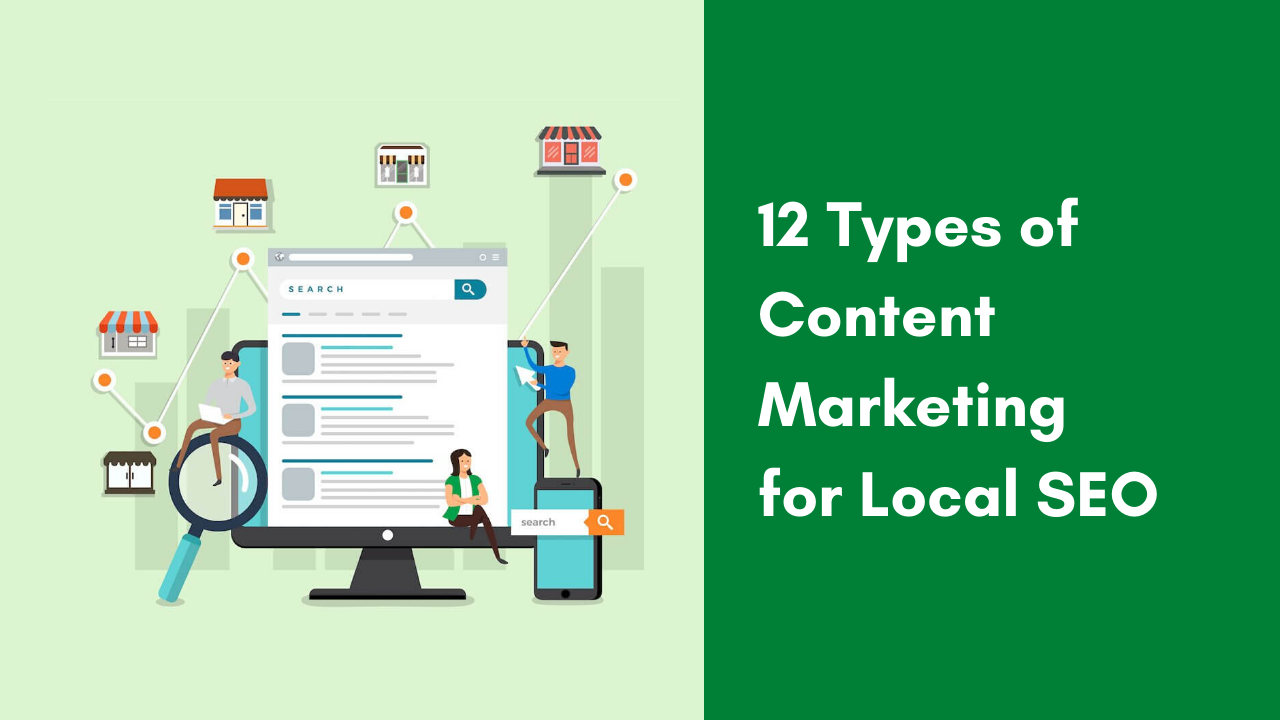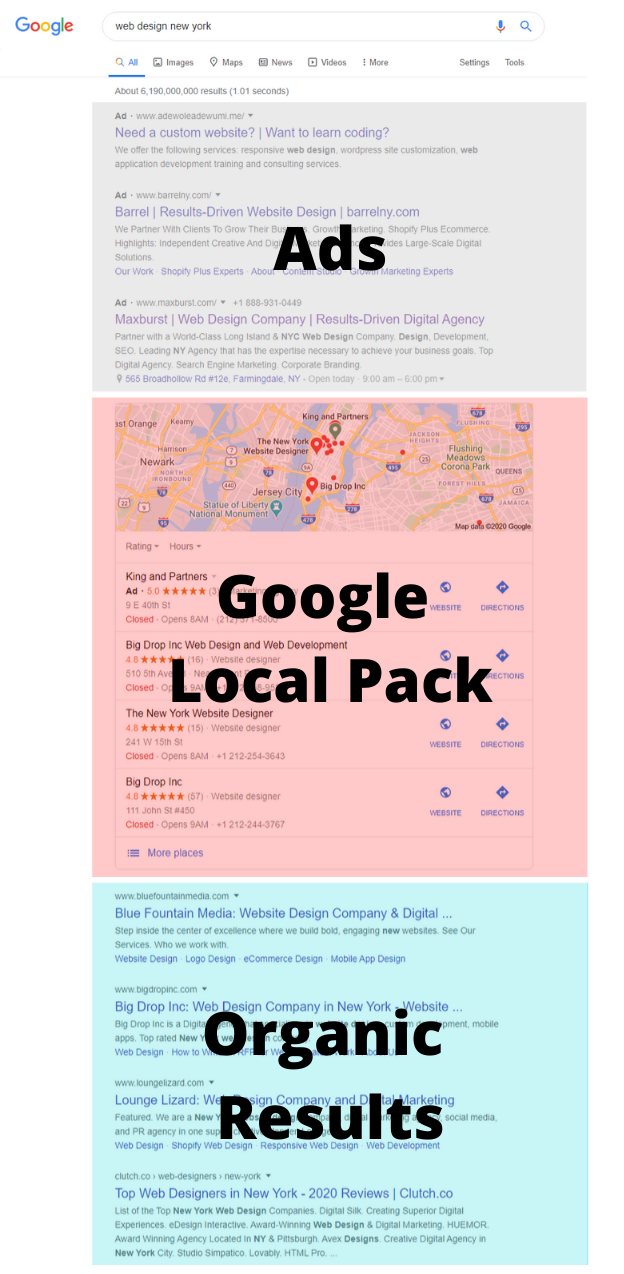Steph W. from SEOPressor


...help you check your website and tell you exactly how to rank higher?


97
score %
SEO Score

Found us from search engine?
We rank high, you can too.
SEOPressor helps you to optimize your on-page SEO for higher & improved search ranking.
By vivian on June 16, 2020

Are you running a local business and looking for ways to grow your SEO rankings to bring in customers?
It might not have crossed your mind, but creating local SEO content could help both your online marketing and ranking.
Because when it comes to optimizing for local SEO, many local businesses tend to overlook content marketing as a viable strategy. This is where you can get ahead of your competitors to attract local searchers.
In this post, you will learn precisely the types of local content you should create and how to set it up to boost your overall website SEO. Before we begin, let’s first understand the basics of local marketing online.
Local SEO is similar to organic search engine optimization, except it focuses on optimizing for local searches.
The idea behind local SEO marketing is to put your business on the map for relevant local searches. Usually, this means ranking for the Google local pack.
In fact, due to how important location is to search results, Google has even dedicated a local search section in its SERPs entirely to discovering businesses available in the area.
Each listing displays the business’s name, its address, and the average rating of the business’s Google reviews. As you can imagine, having your business reviews here will play an essential factor in influencing your potential customer’s decision.
At the same time, other important sections you want to be featured in our Google local pack and organic rankings to be seen on the very 1st Search Engine Result Page (SERP).

Because according to a Moz study, it is shown that local organic results get more clicks compared to the Google local pack. If anything, this points to the importance of content marketing for local SEO.
Ranking for local SEO used to be pretty straightforward. You need to add your Name, Address, and Phone to your footer, build a few strong directory backlinks, and you will see yourself on the local-7-pack.
However, Google is continuously attempting to provide users with search results that are more relevant to their queries.
Google understands that many users are looking for businesses in their area, and many companies also understand the importance of local SEO. The question is, which one should they show first?
That’s why it’s so vital that you create and plan a local SEO strategy incorporating content marketing to boost your local SEO.
While most local businesses only have their eyes on the Google local pack, the organic results are also a place to reach your prospects.
According to SEO Tribunal, 97% of people learn more about a local business via the internet before making contact. This means local businesses must produce educational content as well to be highly visible and competitive.
Remember, you want to promote your product and services to local customers at the exact time they’re looking for them online, as this will more likely result in a visit to your physical location.
To do that, the primary strategy is to rank for local keywords and searches with content marketing.
People search for local businesses every day. Often, they use specific keywords with location names or near-me phrases to discover new companies around them.

For your content to impact local SEO, you will need to choose local keywords that are relevant to your content and that match user intent.
For example, painting contractors in Orlando aren’t going to be able to rank for the phrase “Painting services.” It’s too competitive and too broad, not to mention not local. In fact, trying to rank for “painting contractors in Orlando” is likely not going to be as competitive but much more effective.
Of course, the local keywords that you choose will depend on what services you provide, where you’re located, and who you’re competing against. You will want to use keyword tools, such as Google Ad Words Keyword Planner or LSIGraph in order to identify the relevant, local SEO keywords that you should target.
Don’t forget to do competitive research. Identifying what keywords your local competitors are ranking for can give you an idea of what keywords you should try to rank for (and whether or not you’ll be able to compete).
Once you’ve done your research, create a keyword list.
Rank the keywords you’ve identified based on their importance and competitiveness. Keep in mind that your content strategy is going to have to address every stage of the customer life cycle (reach, acquire, convert, and retain), which means that you’ll need to make sure that you have keywords that match the user intent at each stage.
Besides that, you can also discover the local rankings of your local business and local competitors based on the identified keywords, all with one grid on Grid My Business.
As shown in the image above, Grid My Business will draw a grid around your location and show your ranking based on the search query you aim to rank.
With their 15 x 15 grid, you can quickly identify close to 300 rank positions in one search query. It supports all locations that can be found on Google Maps.
There aren’t many tools out in the market like Grid My Business that can provide you valuable insights into your local search rankings.
Let’s see what valuable insights you can get from Grid My Business now!
Once you have a well-researched keyword list, you will want to develop a strategy that focuses on content marketing for local SEO that enables you to use these keywords so that you can improve your local SEO rankings. The following are 12 types of local SEO content that you should focus on:

In addition to doing thorough keyword research and developing a local SEO content marketing strategy, you should also re-evaluate existing content on your website.
Look at your main web pages as well as old content published on your blog. There’s a chance that you can boost your local SEO rankings simply by optimizing older content using the local keywords that you’ve identified wherever it’s appropriate to do so.
An important keyword optimization practice we always advocate is to use LSI keywords in your content.
Attracting local prospects is critical to generating more business at your physical locations. To increase visibility among local searchers, make sure that you implement a comprehensive local SEO strategy that includes a well-thought-out plan for content marketing for local SEO.
Not only will you attract more local customers, but you’ll put your company in a much better position to compete with other local businesses.
Updated: 13 December 2025


Save thousands of dollars (it’s 100x cheaper)

Zero risk of Google penalty (it’s Google-approved)

Boost your rankings (proven by case studies)
Rank High With This Link Strategy
Precise, Simplified, Fast Internal Linking.
